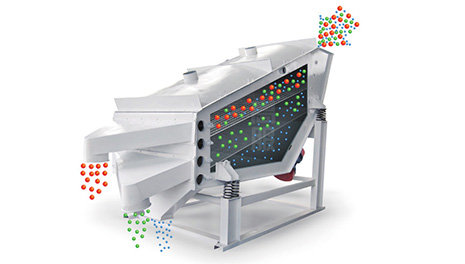Working Principle of Probability Screen
Probability screening is a screening mechanism that utilizes probability theory to separate materials. The working principle indicates that in operation, particles interact with the screen surface openings to form a probability of passing through. By adjusting the screen's tilt angle, the movement trajectory of the particles on the screen surface can be controlled, achieving precise separation of materials. The longer the residence time on the screen, the higher the probability of material screening. Typically, large particles have a longer residence time, while small particles pass through the screen faster.

Probability Screen Model and Specifications
The main probability screen models include GLS0615, GLS1018, GLS1225, GLS2040, etc. The material and structure of the screen may vary based on different screening materials and industries.
Application Fields: Construction materials, mineral processing, metallurgy, chemical industry, food industry, etc.

| Model | Screen Layers | Screen Structure | Aperture Size (mm) | Screen Area (m²) | Inclination Angle (°) | Material Thickness (≤mm) | Motor Model | Power (kW) | Vibration Frequency (1/min) | Double Amplitude (mm) | Capacity (t/h) | Screening Efficiency |
|---|---|---|---|---|---|---|---|---|---|---|---|---|
| GLS0615 | 2 - 5 | Woven Mesh | ~50 | 0.9 | 15 - 30 | ≤50 | YZO8-6 | 0.55×2 | 960 | 5 - 8mm | 15 - 50 | ≥95% |
| GLS0820 | 1.6 | YZO10-6 | 0.75×2 | 30 - 100 | ||||||||
| GLS1018 | 1.8 | YZO16-6 | 1.1×2 | 30 - 120 | ||||||||
| GLS1225 | 3.0 | YZO16-6 | 1.5×2 | 30 - 120 | ||||||||
| GLS1530 | 4.5 | YZO16-6 | 3.0×2 | 30 - 180 | ||||||||
| GLS1536 | 5.4 | YZO16-6 | 3.0×2 | 30 - 180 | ||||||||
| GLS1836 | 6.5 | YZO16-6 | 3.7×2 | 30 - 200 | ||||||||
| GLS2030 | 7.2 | YZO50-6 | 3.7×2 | 30 - 200 | ||||||||
| GLS2040 | 8.0 | YZO50-6 | 3.7×2 | 30 - 250 |
Probability screens are widely used in various industries due to their high screening efficiency, adjustable tilt angles, and precise material separation capabilities. They help enhance productivity and material purity by efficiently separating different particle sizes.
